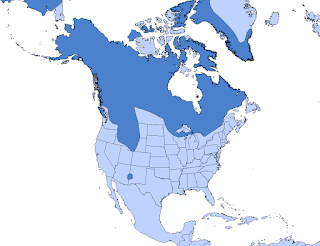GIS Proposal
Pecticide Use and Honeybee Loss
Introduction
Honey bees are essential in how we consume food. They allow us to grow diverse, healthy crops by pollinating each plant. Without honey bees, there would be a drastic decline in the different types of food available.Today, many farms use pesticides to protect crops from nuisance bugs. These pesticides have a detrimental effect on honey bee populations.
I will be researching honeybee populations and the amount of pesticide use in the United States. I will study how much the honeybee population is declining, and see if there is a relationship between their decline and the amounts of pesticides used in each state.
Objectives
Methodology
I will obtain data on honey bee populations in the United States. I will also obtain data on pesticide use in the United States. After I gather those numbers, I will need to put the data into an Excel spreadsheet in order to upload the data into ArcGIS. I will add the States layer in ArcGIS. I will georeference the bee and pesticide data. I will create an ArcMap with both data layers to view the relationship.
Deliverables
This project will help different stakeholders including farmers, government workers, and environmentalists understand the relationship between honey bees and pesticide use, and will help them move forward with different policies.
Data Sources
Bee Populations:
Work Plan
Introduction
Honey bees are essential in how we consume food. They allow us to grow diverse, healthy crops by pollinating each plant. Without honey bees, there would be a drastic decline in the different types of food available.Today, many farms use pesticides to protect crops from nuisance bugs. These pesticides have a detrimental effect on honey bee populations.
I will be researching honeybee populations and the amount of pesticide use in the United States. I will study how much the honeybee population is declining, and see if there is a relationship between their decline and the amounts of pesticides used in each state.
Objectives
- Create an active map
- Show relationship (if any) between bee populations and pesticide use
- Determine what states have the most bee loss
- Determine what states have the highest pesticide use
Methodology
I will obtain data on honey bee populations in the United States. I will also obtain data on pesticide use in the United States. After I gather those numbers, I will need to put the data into an Excel spreadsheet in order to upload the data into ArcGIS. I will add the States layer in ArcGIS. I will georeference the bee and pesticide data. I will create an ArcMap with both data layers to view the relationship.
Deliverables
This project will help different stakeholders including farmers, government workers, and environmentalists understand the relationship between honey bees and pesticide use, and will help them move forward with different policies.
Data Sources
Bee Populations:
- https://www.usda.gov/nass/PUBS/TODAYRPT/hcny0516.pdf
- https://www.usda.gov/media/press-releases/2016/05/12/usda-releases-results-new-survey-honey-bee-colony-health
Pesticide Use:
- https://water.usgs.gov/nawqa/pnsp/usage/maps/show_map.php?year=2015&map=GLYPHOSATE&hilo=L
- http://npic.orst.edu/ingred/stats.html
- https://www.nass.usda.gov/Surveys/Guide_to_NASS_Surveys/Chemical_Use/
Work Plan
- Revise work plan 10/11
- Conduct Research 10/12-11/25
- Finalize Project 12/8
- Final Project 12/11


Hi Maggie,
ReplyDeleteI really like your topic, I find it intriguing and I think it will be really interesting to see if there is a correlation between honey bee population size and the use of pesticides. Some suggestions that I have is to put a correlation tool into your analysis so that you may better assess the relationship between the two variables. Furthermore, I think it would help you to organize your thoughts more to make a more thorough work plan.
Hey Maggie!
ReplyDeleteThis is a really cool topic, I'm excited to see how it turns out, the one suggestion I have is to make a more in depth work plan so you know what you have to do and when you need to get it done by!